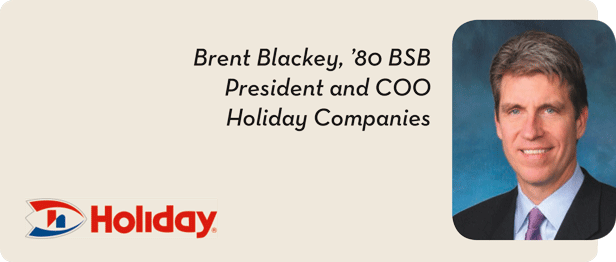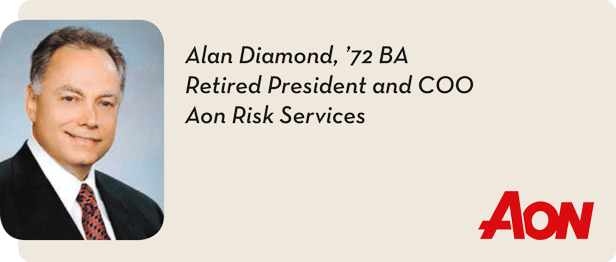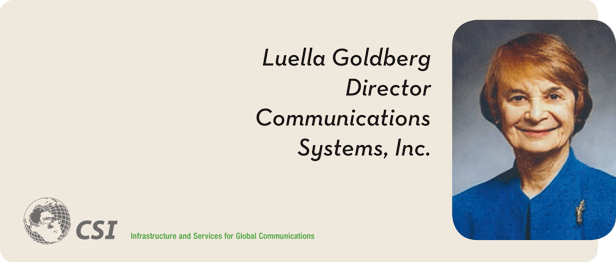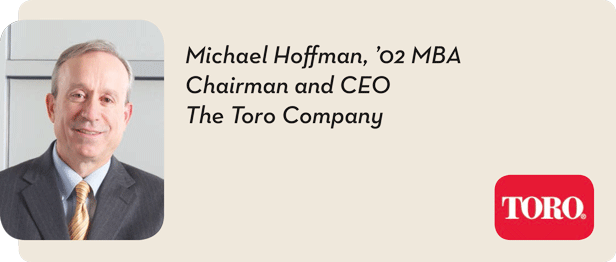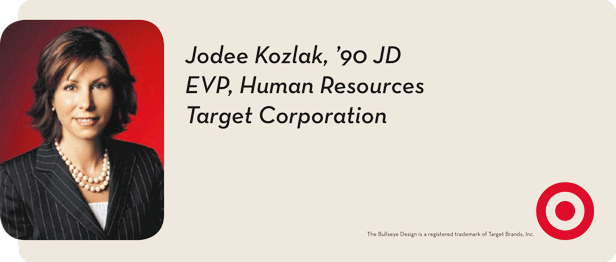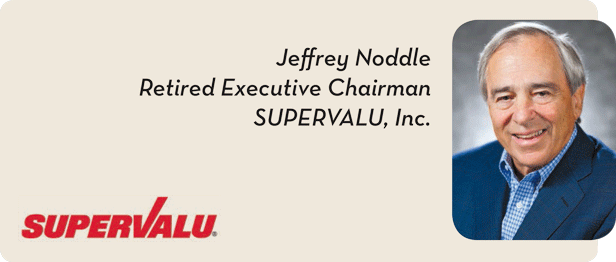
The Evolving Workplace
Tuesday, April 1, 2014
By Kevin Moe
The workplace environment is a constant sea of change, and it has only grown more volatile since 2008. Juggling shifting demographics, additions of new technology, and the evolving needs of employees is a required skill to have in maintaining a successful workplace.
Work and Organizations Emeritus Professor John Fossum has seen both recession-related and secular changes in the workforce over the past few years. “From a recession-related standpoint, employers improved productivity with much leaner workforces than before. From a secular trend standpoint, the demand for STEM-based (science, technology, engineering, and mathematics) labor has consistently exceeded the supply, while the supply of physical and low-skill labor has increasingly exceeded the domestic demand in the long run,” he says.
Another inequality in the workforce that Associate Professor John Kammeyer-Mueller notices is the demand for high- and low-paying jobs. “Jobs for those with college educations and high levels of experience have had a much more significant increase in demand relative to jobs that don’t require these credentials,” he says.
Kammeyer-Mueller also says that much has been made regarding the discrepancy between the knowledge and skills of the workforce and employer demand. “Basic communication and problem-solving skills are seen as lacking,” he says. “This has put a new pressure on education providers to transform their models, which is actually at odds with political pressure for standardized testing models that are notoriously lacking when it comes to evaluating skills such as communication and problem solving.” Students coming into the market may find themselves needing to invest additional time developing these skills.
As new generations of employees enter the workforce, employers need to be aware of their wants and needs to enhance their happiness and productivity and foster harmonious work teams. Many employees are seeking healthier lifestyles, and employers can benefit by promoting these desires.
Work and Organizations Professor Avner Ben-Ner recently studied the effects of employees using treadmills instead of office chairs as they work. The results were encouraging. Calorie expenditures increased, which could be expected, but there also was a marked increase in worker productivity—close to one point on a 10-point scale. “That’s a substantial increase,” Ben-Ner says.
Professor Joel Waldfogel, the Frederick R. Kappel Chair in Applied Economics, has noticed the impact of changing technology on the workforce. “For a long time, improvements in technology served as substitutes for only rather menial work and as complements for more skilled workers,” he says. “For most people—including most white collar employees—machines made them more productive. Now some combination of better computers, better data, and better software is allowing machines to serve as substitutes for more and more sophisticated kinds of workers.” As an example, sites such as Expedia, Orbitz, and Travelocity have sent many travel agents down the road to the realm of elevator operators and gas station attendants.
“The most skilled people—those who can use new technology to be more productive rather than to be replaced—are prospering from these changes,” Waldfogel says. “But many others, particularly those in the middle, are threatened. A renewed focus on training and education is necessary to position people to take advantage. One of the keys to success in the unfolding economy is to learn how to make machines your robot servants, so that you aren’t replaced by one.”
Let Motivated Employees Be Your Beacon
Holiday has been in business for more than 80 years and has seen many, many changes, especially in regards to demographics and customer preferences. “Every individual—each customer, and each Holiday staff member—comes to our store with their own personal story,” says Brent Blackey. “Yet a common thread has always been our commitment to delivering a great customer experience on every visit, and equipping our people to deliver on that commitment.”
As demographics shift, both in terms of cultural identity and generational identification, companies need to be cognizant of these fluctuations in their customer bases, as well as within their own staffs. “We are attentive to the different styles of communication and learning that resonate with different generations, and I’m proud that our leaders do a great job of selecting, training, and managing a very diverse team of people in order to deliver great service to customers,” Blackey says.
He considers all of these changes to be an opportunity—one to gain new customers and to strengthen the bonds with established ones. The key to this is having an enthused and energetic staff. “Nearly everyone buys our core product—fuel. We’d like to get more of these fuel customers to come inside the store more often and make a convenience purchase,” he says. “It takes great people to work those programs with excellence. So when customers have many choices of where to stop, having the best people—people who can help you in a brisk, comfortable, and friendly manner—that’ll be the difference-maker for customers consistently choosing you.”
Customers have many choices, and those choices will continue to proliferate. “The competition never rests, so we have to keep on improving. Delivering on a great customer experience is what we strive for every day. We work hard at it and we have to be consistent and relentless,” Blackey says. “Having great people who feel valued and motivated to serve—that will help make each customer visit be great and will be a competitive edge that successful companies will always want to hone.”
Social Media is Key, but Don't Forget that Personal Touch
To Alan Diamond, the two most significant issues businesses will face in these changing times are the world of social media and the client relationship.
“Social media is clearly vital for all businesses to survive and thrive, but it is the control and understanding of it that is important,” he says. “With the ability to instantaneously spread a message, positive or negative, informed or ill-informed, has never been greater. The extent to which we utilize and understand this medium will be crucial for all businesses.
“In direct relation to this, as technology and its platforms make transactions as efficient as possible, there is a risk of undervaluing the personal relationship aspect of business. Understanding our clients’ needs and responding to them, communicating with our employees, engendering trust and confidence, and reaching our constituents and stakeholders has never been more important. As a mentor of mine once told me, ‘You cannot email a handshake.’”
Attract Top Talent with Aligned Values
As the economy recovers and people move forward to do business in 2014 and beyond, personnel matters in relation to business staffing will become increasingly challenging. Companies will have to become even smarter than they needed to be during the recession about their approach to attracting and retaining the best talent.
“Society’s diversity, as well as the global reach of most businesses, requires an increasingly diverse workforce able to compete effectively in the worldwide marketplace,” says Luella Goldberg. “Diversity should not only encompass the usual categories of gender, race, religion, and sexual orientation, but thought must also be given to a workforce with different backgrounds and varied personal and professional experiences.” She says a growing emphasis will be placed on some sort of international experience for employees who wish to advance to positions of significant responsibility in their careers. “Let me applaud here the Carlson School’s many opportunities for student international experience,” she says.
Goldberg also notes that most young people beginning business careers today place a great deal of emphasis on work-life balance issues. “They want time to be involved in family and community activities and seek employment where the job is not a 24/7 one,” she says. “It will be important as well for corporations to create environments that are attractive and ‘workable’ for dual career couples.”
Workforce members of the future will be increasingly eager to be involved in work that is truly meaningful and satisfying to them—they will not feel fulfilled to simply “have a job” and they will not stay with a company simply to “keep a job.” “They will want their talents to be well used and appreciated, and they will want to feel that a company’s values reflect their own values. They will want to feel that their work makes a real difference for good in our global society,” she says. “The organizations that are best able to respond to these trends creatively and authentically will be the ones to attract the talent they need to succeed.”
Companies Leveraging Leaner Workforce
Since the recession, the job market has become increasingly competitive because open positions are now much more limited. Many companies that were faced with workforce reductions during the economic downturn are now leveraging employee resources in a leaner structure rather than expanding employee headcount back to pre-recession levels. Added to the dearth of available positions, many current employees have reevaluated retiring and are working longer because of the impact the recession had on their retirement plan savings.
“We have benefited from the retention of long-term employees having unique skills and significant knowledge of our company’s products and markets, as well as the additional time to plan for transitions,” Michael Hoffman says. “However, those seeking their first job or a new opportunity can find it more difficult landing a position given the competitive environment.”
For well-qualified employees, Hoffman says there seems to be a “flight to quality”—these individuals seem to be more selective in the companies in which they are seeking employment. “For Toro in particular, candidates have mentioned, among other things, our longevity and stability as a company on the verge of celebrating its 100th anniversary, our support of the communities in which our employees live and work, and our financial performance all as key elements that attract them to our company,” Hoffman says.
As mentioned elsewhere, social media and other technology have significantly altered the way companies recruit talent, and it has created its share of challenges. “Different generations of employees tend to have different communication styles and preferences, as well as different expectations regarding what is a public versus private communication,” Hoffman says. “With respect to intellectual property and company know-how, every new technology causes us to assess how information is created, shared, stored, and protected. And, of course, our employee policies, guidelines, and training must be reviewed and revised to appropriately keep up with new technologies and behaviors.”
Engage the Strengths of Millennials
The world today is seeing a massive shift in workforce composition, as Millennials are now becoming a larger percentage of an already diverse employee base. And this influx can be a great opportunity. “We believe that having a diverse team and an inclusive culture will help us stay in tune with the needs of our guests,” says Jodee Kozlak. “This generation is changing how work gets done, and we see its focus on technology and collaboration as a huge source of competitive advantage.”
The Millennials’ use of social tools to solve problems, for example, helps Target develop a multichannel experience that blurs the lines between online purchasing and shopping in a physical store. Millennials also are willing to share their expertise with others, so Target encourages cross-generational mentoring. “I personally have a digital advisor who helps me understand the changing technology landscape and build the social media skills I need to engage with Target’s global team in new ways,” Kozlak says.
While Millennials want to have the latest tools and technology at their fingertips, they also want the flexibility to blend their personal and professional lives. “Not only do they want a place where they can grow and develop, they are looking at what quality of life they can have,” Kozlak says. “We know that when team members are healthy and happy, they are more productive and drive results for the company.”
Target takes great pains in measuring employee engagement as it will continue to be the best way to attract and retain top talent in the coming years as the candidate pool continues to evolve. “For companies to succeed, they must anticipate what it will take to stay relevant—to boomers, Millennials, or the next generation entering the workforce—and then pull the right levers at the right time to drive engagement,” Kozlak says.
Companies Benefited from Selective Hiring and Technology
Once the economy starting retracting during the recession and unemployment went up, companies had a chance to be more selective in their hiring, as more and more people vied for scarce positions. “If you look at the performance of corporate America and its improvement in productivity and in equity markets, it is because it has been able to hire well,” says Jeffrey Noddle.
Now that the unemployment rate is improving, companies don’t have the selectivity they had before. Noddle doesn’t think that will have much of a deleterious effect on the companies’ welfare because they adapted in other ways during the recession. “Since the recession, companies got more proficient in technology—you saw more and more of it coming into play. With all of the new technology now being used, there won’t be as many skilled positions as before,” he says.
Also, a lot of people have become accustomed to part-time work since the recession. “It seems there’s more flexibility in the workforce now,” Noddle says. “It’s not as rigid as it was before.” Seeking flexible work opportunities is a trend tied to a good work-life balance, and companies are taking notice of the role it plays in well-being and productivity. “I think more and more companies are finding ways to facilitate healthier lifestyles,” he says, pointing out that many businesses offer incentives for employees to lose weight or stop smoking. “But there’s never a time in business when you don’t have to adjust when cultural issues change.”
Health Care Employment Has Risen Amid Changing Labor Market
As a result of the Affordable Care Act, Kenneth Paulus notes that employment at health care organizations continues to grow. “That said, the recession has had a direct impact on patient volumes, with hospital utilization down across the nation,” he says. “As a result, much of the growth is in ambulatory and outpatient settings—locations of care that are less costly and closer to the patient’s home.”
Paulus says hiring in today’s market has also changed markedly. “Like other industries, we are experiencing and learning about the demands of the next generation of workers,” he says. “They tend to be somewhat less loyal to any given organization and question the authority of a big organization more so than others. They are comfortable asking questions of leadership and demand regular and transparent communication.” The new generation also tends to have a commitment to community service and an interest in playing a meaningful role in making a difference as part of their day-to-day work.
Companies Need to Adapt to Their Employees' Needs
Cindy Rodahl has identified several key areas where companies need to evolve in order to effectively engage an increasingly more diverse workforce. Topping the list is communication. “We have employees spanning several generations, so we need to figure out the most effective way to communicate with them via their preferred vehicle – written, video, text, or instant messaging,” she says. “Companies are thinking differently about their employee communication strategy. Not only about creating new tools and learning how to manage these new tools, but also about ‘decluttering’ the communication process to drive employees’ focus. Understanding what information is most important adds layers of complexity to how we effectively communicate with our employees.”
Also, employees’ access to company information, as well as forums to share information about the company, has grown significantly in the last five years. “This is our new reality. Taking a ‘control’ approach is proving less successful than building an environment of open communication to promote dialogue and prepare employees to manage more successfully,” she says. “Creating a clear understanding of the company’s core values is especially critical in building an environment of open communication. They provide employees guideposts for doing business and are the foundation for building trusting relationships.”
An area that perhaps can have the greatest impact on building a culture of inclusion and leveraging workforce diversity is leadership agility. “Leaders want to understand how to go below the surface to truly understand the motivations of their employees to maximize the full potential of their organization,” she says. “They want help in making the shift from a mindset of ‘I am the leader and my employees adapt to me’ to building a mindset of ‘How do I, as a leader adapt to my employees and work differently with them to leverage their collective capabilities?”
Rodahl says having understanding is the greatest key to successfully managing generational differences in the workforce. “Creating forums that allow employees from different generations to work together creates the opportunity to see individuals through a different lens,” she says. “One such opportunity is reverse mentoring. This allows a leader to be paired with an employee from a different generation with the specific purpose of the employee providing perspective and insight to the leader that might not be regularly accessible otherwise.”
Finally, companies need to figure out how to bridge the talent gap. “With less investment in talent development in recent years due to the economic downturn and new requirements for success, many organizations have a talent gap. To bridge the gap, they are identifying opportunities for accelerated development of their internal talent, acquiring new capabilities through external hiring or a combination of both,” she says.
Mastering these skills is imperative for companies to succeed in retaining valuable employees. Recent statistics from the Bureau of Labor Statistics show that the average worker stays at each of his or her jobs for 4.4 years, and 91 percent of Millennials expect to stay in a job for less than three years. “For all employers, figuring out how to retain Millennials and other workers longer requires thinking differently about the work and providing challenging assignments and opportunities for growth and learning.”
